The shape of yew: topiary at the cutting edge
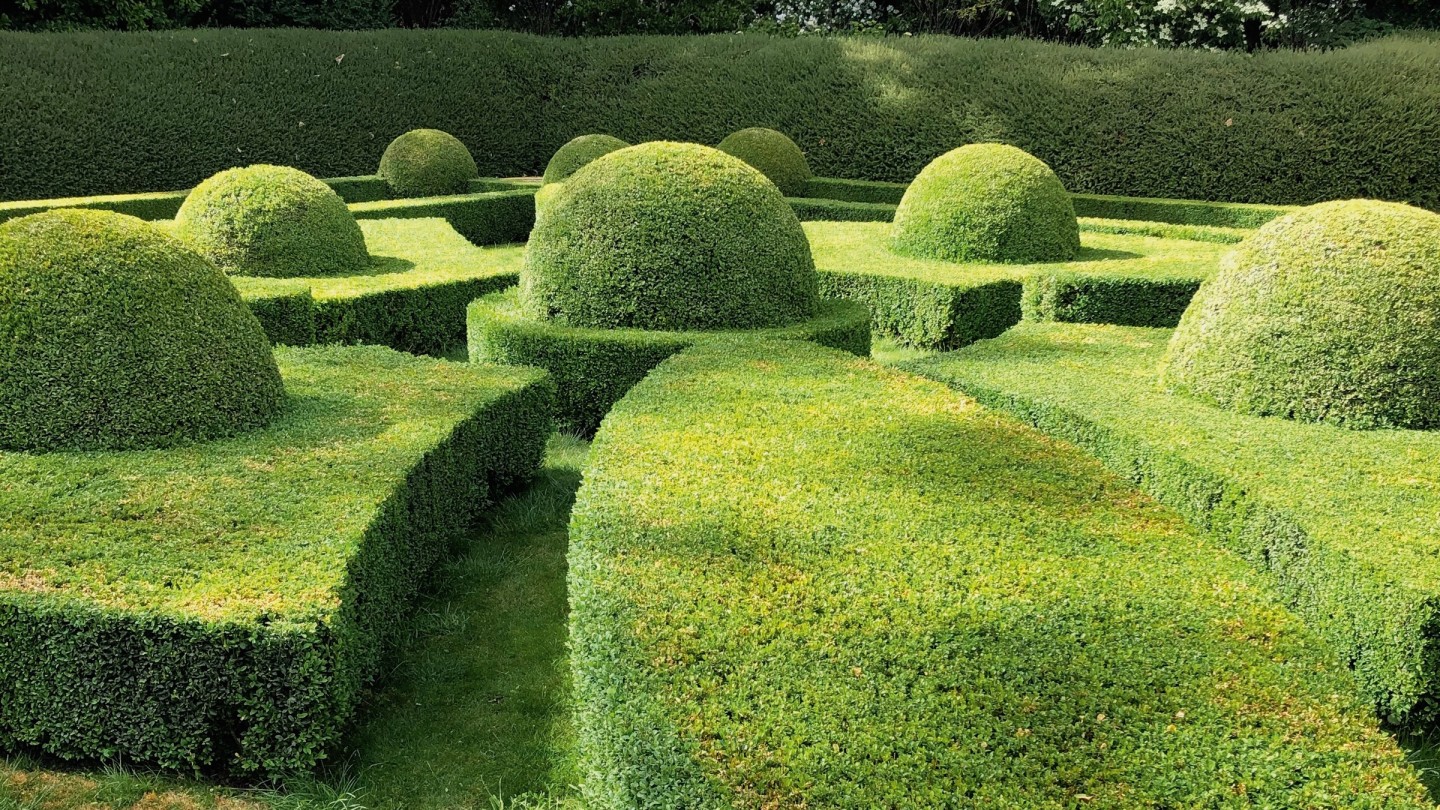
Roula Khalaf, Editor of the FT, selects her favourite stories in this weekly newsletter.
At the zenith of its popularity in the 17th century, topiary – the art of trimming shrubs and trees into ornamental designs – drew inspiration from the clipped pyramids, domes and balls arranged in the vast parterres and avenues of Versailles: horticultural spectacles that were a display of wealth, power and control. It is a tradition that has continued, and this summer the palace’s brigade of topiarists will be trimming nearly 700 topiary hedges and trees into 60 shapes with military precision.
Elsewhere, however, topiary is loosening up and designers are increasingly using the crisp lines of clipping amid naturalistic planting – adding definition to wildflower meadows or mixed borders. “The shapes instantly enhance areas of whim and whimsy,” says garden designer Butter Wakefield. “It holds the scheme together throughout the entire year. In summer, the topiary allows frothy perennials and flowering shrubs to take centre stage but, just as crucially, it provides a strong sense of geometry, drama and structure and winter interest in the colder months.”
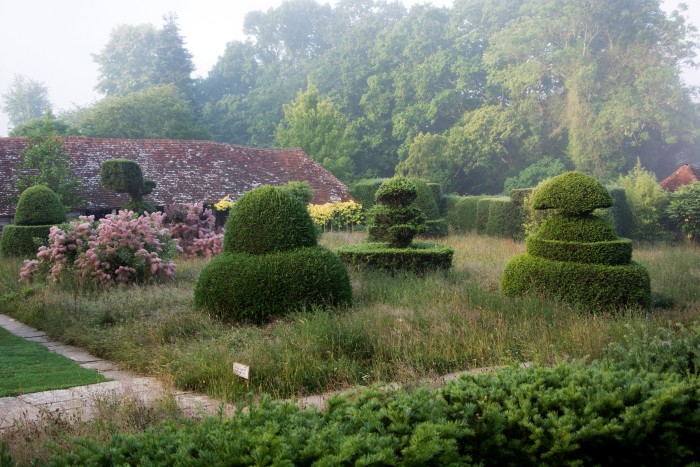
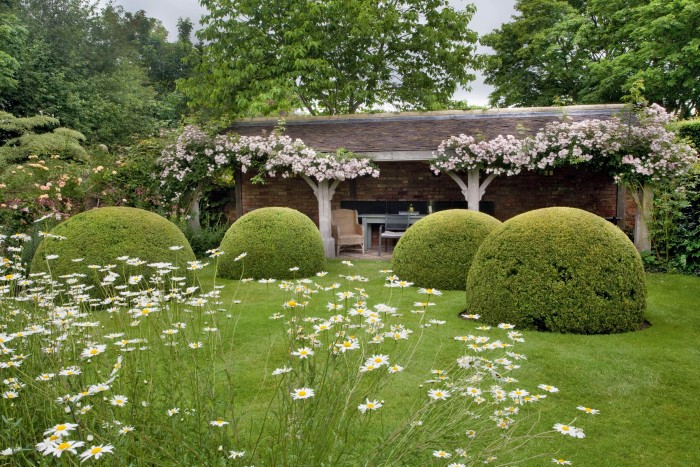
Possibly the most famous example is at Great Dixter’s topiary lawn, where bulbous yews sit waist-deep in the golden grasses of midsummer. But the effect can be just as dazzling on a smaller scale. At Wollerton Old Hall in Shropshire, the jewel-box “font garden” features four dome-like box balls fronted by a miniature meadow, which looks onto an oak-and-brick loggia fringed by rambling rose “Francis E Lester”.
Box and yew have long been used to add formality to gardens, but trading these traditional plants for different varieties lends topiary a lighter, more playful aesthetic. “I like to use them as an eye-drawer, as they ground a space,” says landscape designer Alasdair Cameron, whose own Devon garden – created from scratch from a farmyard and field – makes use of topiary beehives, mushrooms and domes to establish it within the enfolding landscape. “We are circled by major trees in the distance and the tops of the oaks and beech are like the tops of the topiary, which pulls in the landscape. Different textures of leaf from beech and hornbeam help create a sense of movement; some are more solid, others lighter and more open.”
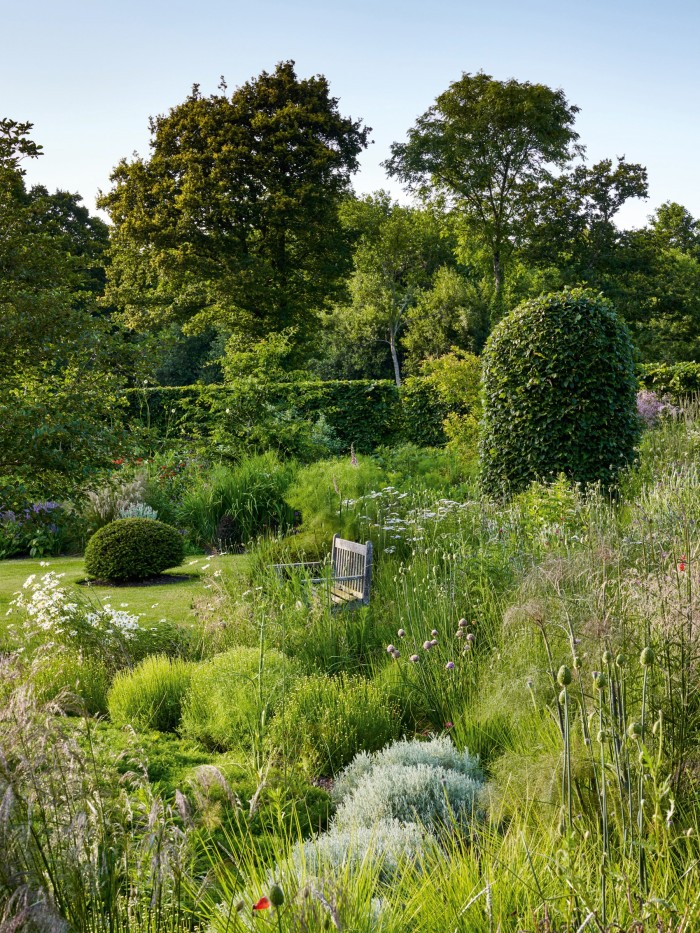
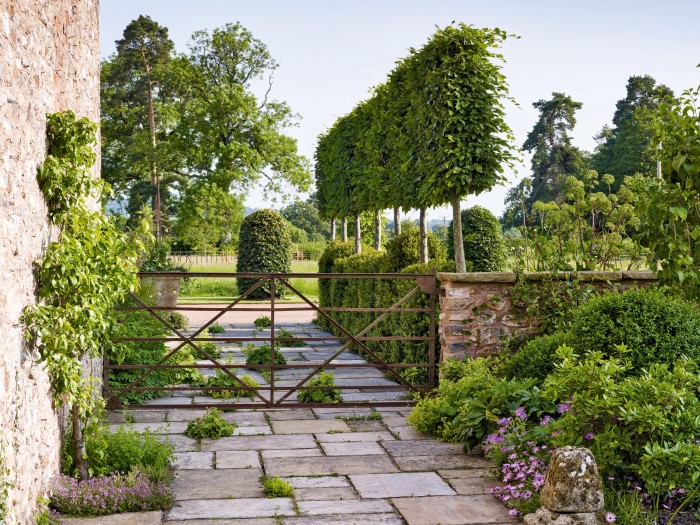
Cameron dots contrasting shapes through his vast perennial borders or uses beech domes as sentinels to unify his buildings with the surrounding meadows. He highlights other shrubs that respond well to clipping – pittosporum, viburnum, teucrium, santolina, even prostrate rosemary can be pruned and trained into interesting forms. “You can take it in loads of different ways – it’s just how you clip. I love the creativity of it.”
A growing appreciation for four-seasons gardening has also helped popularise beech and hornbeam, which both cling on to their rusty leaves in winter. Tom Stuart-Smith’s ghoulish beech pepper pots at Broughton Grange near Banbury, Oxfordshire, have their starring moment when dusted with frost and surrounded by the skeletal remains of summer grasses and perennials. When he used a grove of 30-year-old cloud-pruned hornbeam trees as part of his show garden at Chelsea in 2008, it gave the softer approach towards topiary a global platform.
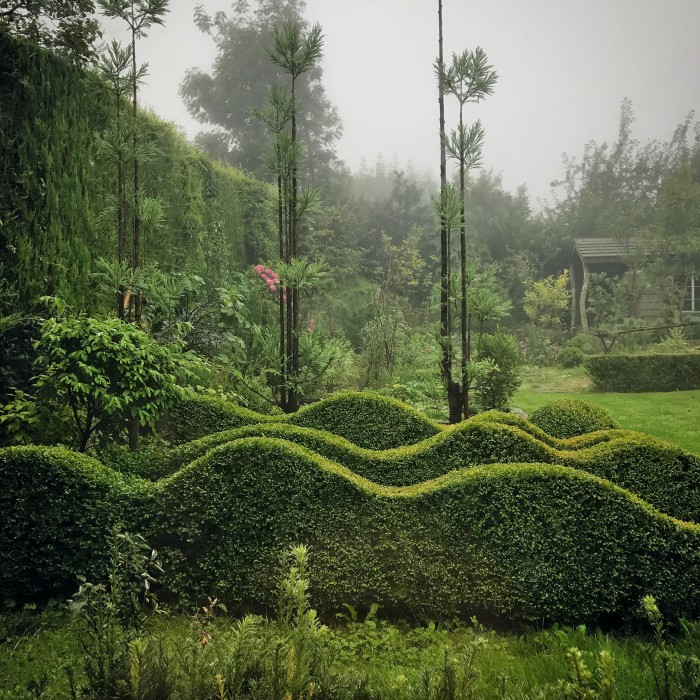
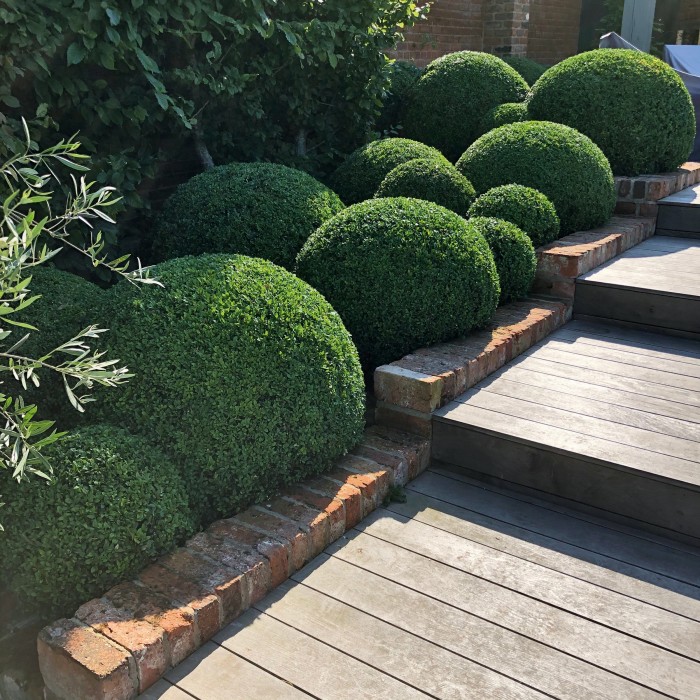
“That was a game-changer,” asserts Jake Hobson, author of The Art of Creative Pruning, who originally studied sculpture at the Slade before becoming enchanted by the Japanese approach to pruning – he learnt his trade in a tree nursery outside Osaka, then brought his passion for niwaki trees (and cultish Japanese tools) and a more freeform approach to clipping back home to the UK. He believes that Henk Gerritsen’s garden Priona Tuinen in the Netherlands, with its oddly undulating topiary forms sitting in naturalistic planting, was a major influence on the more organic approach we are seeing today. “If you want to cite a beginning, he was the one who deliberately did it as both an ecological and aesthetic way of pruning,” he says.
At Hobson’s alma mater, Architectural Plants in West Sussex, the demand for topiary has increased by 40 per cent over the past year. Its bestsellers are highly sculptural and home-grown niwaki trees (bonsai for the garden), clipped Phillyrea latifolia (green olive), Myrtus apiculata (orange-barked myrtle), which has the added bonus of small white flowers in late summer, as well as the evergreen hedge plant Ilex crenata. Architectural Plants also specialises in balls and pillows to create “blobberies” and cloud-pruned topiary.
At Solitair in Loenhout, Belgium, the sky is quite literally the limit when it comes to these freeform shapes. Instant cloud-pruned hedges that resemble fluffy clouds, created from up to 100 plants in yew or osmanthus, are so expansive that they can be installed with secret rooms inside the hedge. Plants are grown for up to 30 years in the nursery and regularly moved so they can be relocated eventually with little stress to the plant. Each one is numbered and then fitted together like a jigsaw puzzle on site.
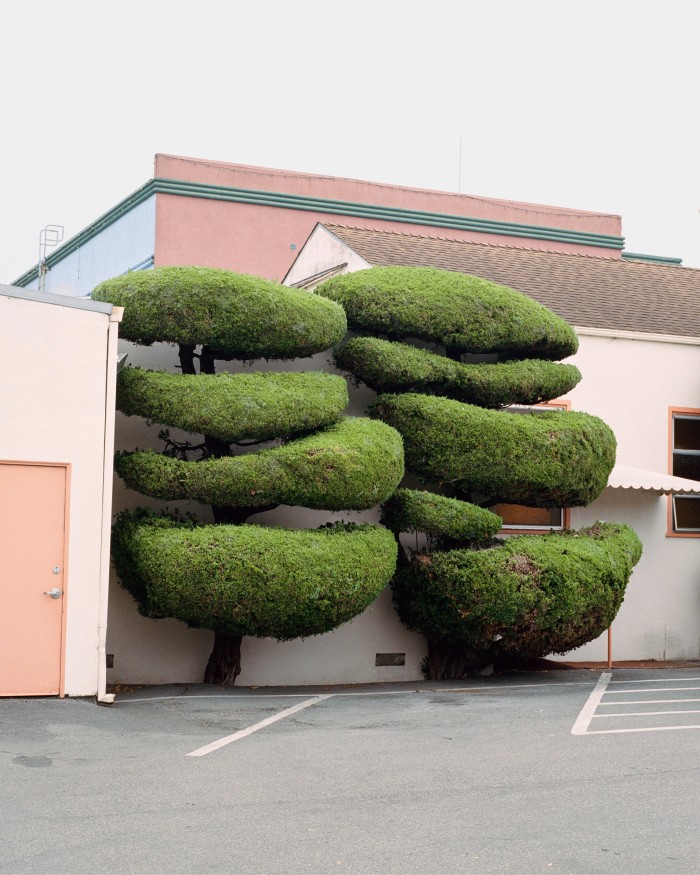
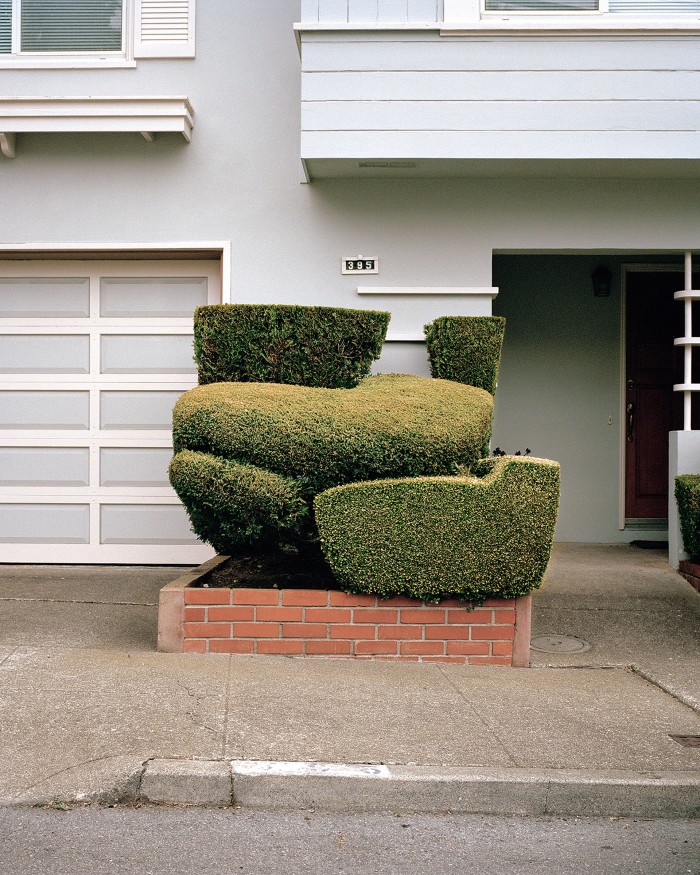
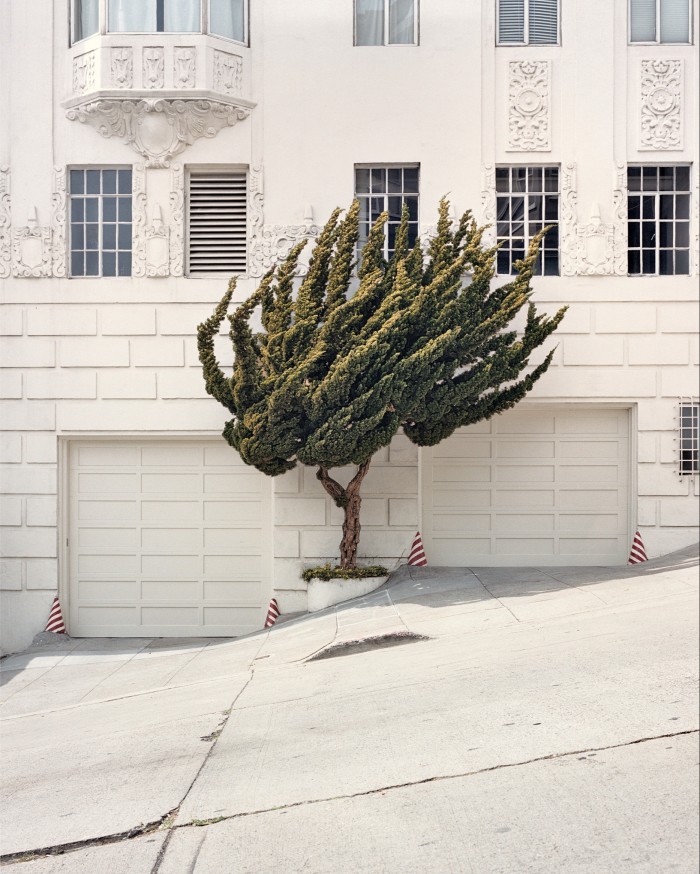
The popularity of cloud-pruned hedges has spawned demand for a more diminutive form too – sculpted organic shapes, which are now the most popular topiary at the nursery after perennially popular domes. “The shapes are always unique,” explains Chloë Cools, daughter of tree specialist and Solitair founder Dirk Cools. “We often make 30 pieces that are all different but work well together. Some people see them like pieces of sculpture in their garden.” At the nursery there is a field for experimenting with new forms. “One of the first things I learnt from my father is that you can’t just make a drawing. You first have to look at the tree to see what possibilities are already there. This makes it interesting – you can be creative with it.”
“There is a lot more demand for cloud designs and freeform designs,” agrees topiarist James Todman, whose clients include Kelmscott Manor, where he is currently in the process of reinvigorating William Morris’s Fafnir topiary dragon. He’s one of the specialists on Instagram and YouTube who are happy to share and dazzle viewers with their clipping prowess, and has seen an exponential rise in interest over the past two years. “Clipping and creating topiary are a wonderful form of mindfulness,” he says.
This freeform approach is not new – the Belgian landscape architect Jacques Wirtz was planting cloud hedges as early as the 1970s – but it’s now no longer the preserve of grand estates. “It’s become much more accessible and achievable,” Hobson affirms. “If you come to gardening through any sort of slow and gradual learning, you tend to be indoctrinated into traditions. But there’s a point where you are inspired to go out there and you do whatever you want.”
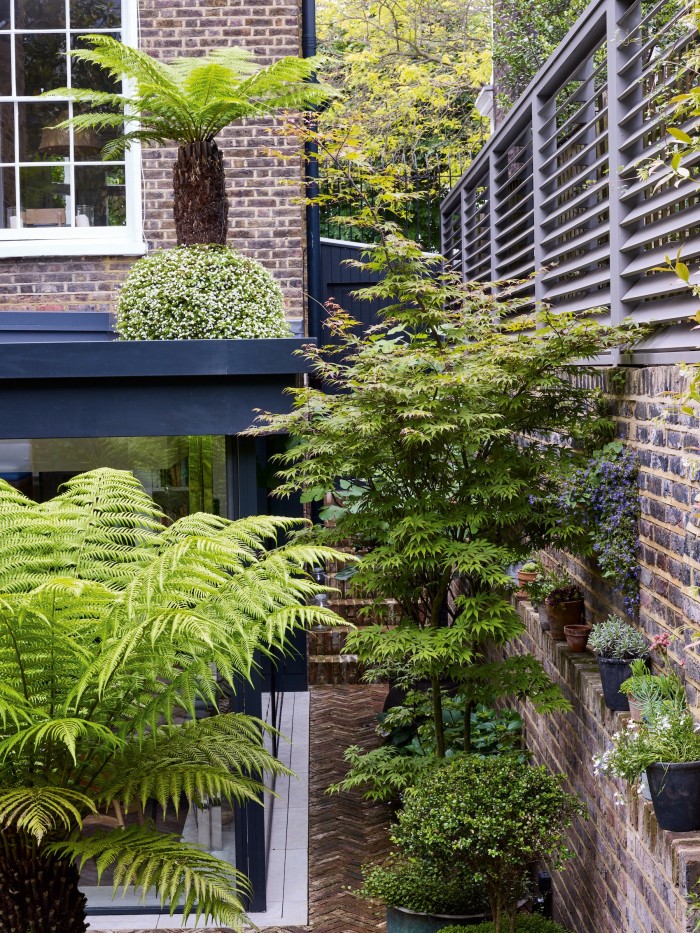
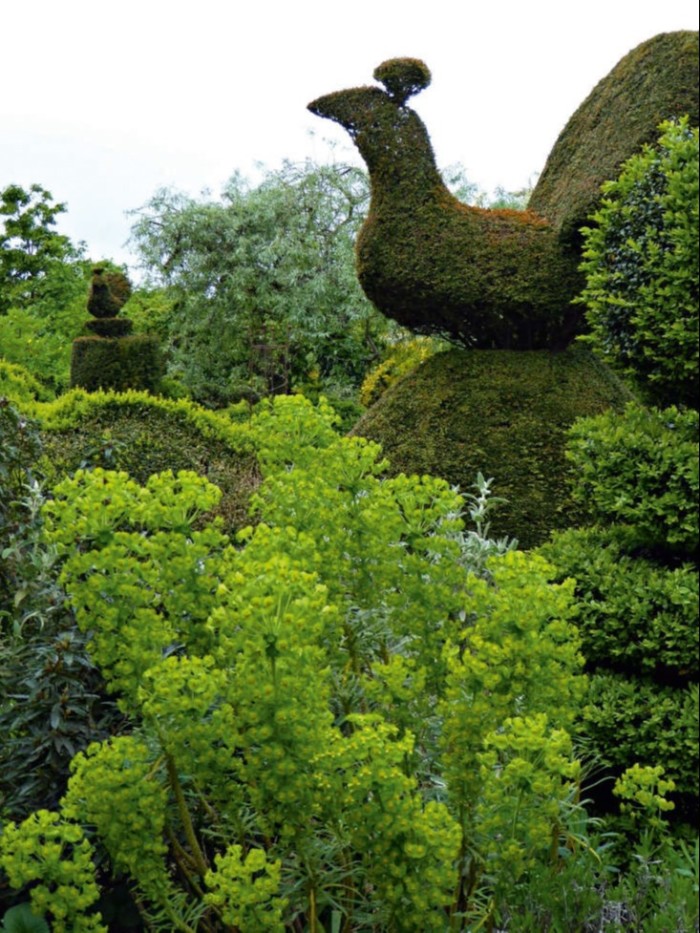
And you need not spend a fortune. Charlotte Molesworth’s extraordinary Alice in Wonderland-esque garden of undulating hedges, towering chess pieces, spirals, peacocks, dogs and balls in Benenden, Kent, is a case in point – every plant was grown from cuttings of box and yew. It’s an art that Molesworth is keen to share with others. This September she and topiarist Darren Lerigo, who often works in the garden, will host a weekend of masterclasses on the basics.
“Topiary is not cheap to buy but it doesn’t take long to grow yourself,” concludes Alasdair Cameron, who suggests planting bare root whips (young saplings that often cost just a few pounds) and clipping them to make your own topiary, creating the desired shape over time. He has done just that with the sculpted beehive hornbeams in his own main border. “I love the clean look and the way it appears to hover,” he adds. “Because it’s hornbeam it connects the garden to the landscape – it’s like a messenger between the two. My wife asked why on earth I was putting it in at first, but now it’s everyone’s favourite part of the garden.”

Comments